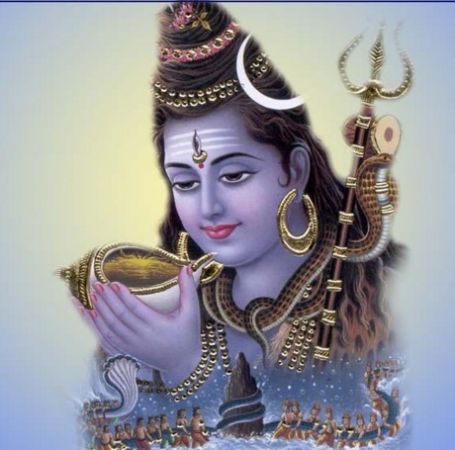
As we know that Lord Shiva has been denoted with many powerful names and one of his most powerful name is - Neelkantha a legend connected with this name is inspiring. As we know, Hinduism is a philosophy described using metaphors. These metaphors describe the fundamental values and principles of life.
Here’s the meaningful legend:
When the Asuras (demons) and the Devas (Gods) were eager to get hold of Amrit, the divine nectar of immortality, a contest was organised so that one of the two parties could reap benefits. The samudra/kshirasagara (ocean) needed to be churned in order to attain the nectar. And to execute this daunting task, the Mandara Parvat (a mighty mountain named Mandara) was used as a churning rod and Vasuki (the king of Snakes) was turned into a rope.
The Devas and the Asuras started pulling the rope from either side so that the nectar from the bottom of the Kshirasagara could be obtained but while churning, even harmful things started surfacing. Halahala was a poison that gradually started spreading all over. According to another legend, Halahala was the poison that dripped from Vasuki’s mouth as he was pulled to and fro by the Devas and the Asuras.
This Halahala was so poisonous that it could ruin creation. Fearing the end, the Devas and the Asuras pleaded to Lord Shiva to save the creation. A compassionate being that he is, Shiva agreed to drink the Halahala. Shiva arrested it in his throat to prevent it from seeping into his body. And according to another legend, Mata Parvati on learning that Shiva had consumed the Halahala, held his throat so as to stop the poison from running down to his stomach.
The impact of the poison was such that it turned Shiva’s neck blue and hence the name Neelkantha. Symbolism: Both the good and the bad exist. One needs to learn the art of stopping negative energy from affecting us.